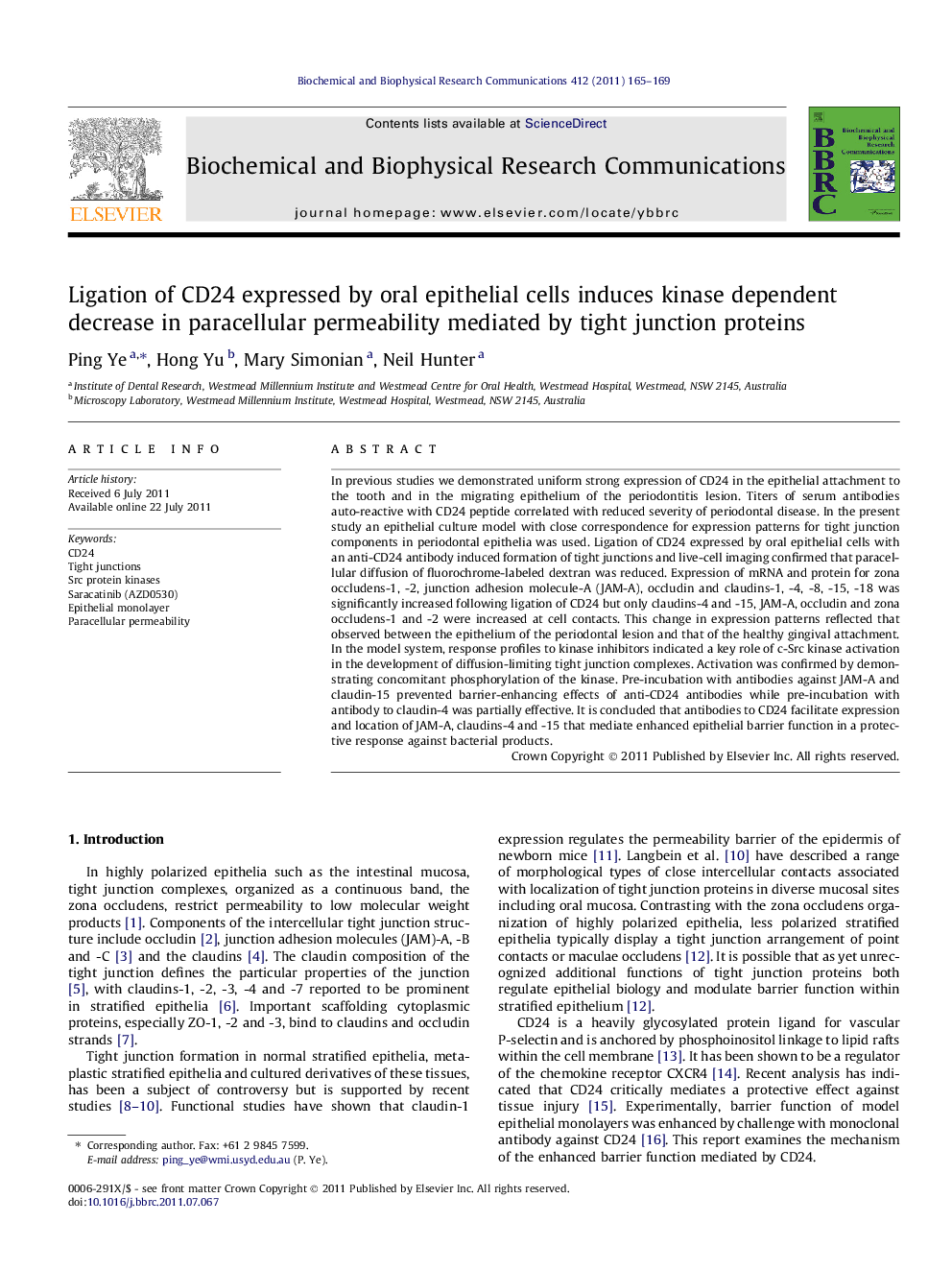| Article ID | Journal | Published Year | Pages | File Type |
|---|---|---|---|---|
| 1930314 | Biochemical and Biophysical Research Communications | 2011 | 5 Pages |
In previous studies we demonstrated uniform strong expression of CD24 in the epithelial attachment to the tooth and in the migrating epithelium of the periodontitis lesion. Titers of serum antibodies auto-reactive with CD24 peptide correlated with reduced severity of periodontal disease. In the present study an epithelial culture model with close correspondence for expression patterns for tight junction components in periodontal epithelia was used. Ligation of CD24 expressed by oral epithelial cells with an anti-CD24 antibody induced formation of tight junctions and live-cell imaging confirmed that paracellular diffusion of fluorochrome-labeled dextran was reduced. Expression of mRNA and protein for zona occludens-1, -2, junction adhesion molecule-A (JAM-A), occludin and claudins-1, -4, -8, -15, -18 was significantly increased following ligation of CD24 but only claudins-4 and -15, JAM-A, occludin and zona occludens-1 and -2 were increased at cell contacts. This change in expression patterns reflected that observed between the epithelium of the periodontal lesion and that of the healthy gingival attachment. In the model system, response profiles to kinase inhibitors indicated a key role of c-Src kinase activation in the development of diffusion-limiting tight junction complexes. Activation was confirmed by demonstrating concomitant phosphorylation of the kinase. Pre-incubation with antibodies against JAM-A and claudin-15 prevented barrier-enhancing effects of anti-CD24 antibodies while pre-incubation with antibody to claudin-4 was partially effective. It is concluded that antibodies to CD24 facilitate expression and location of JAM-A, claudins-4 and -15 that mediate enhanced epithelial barrier function in a protective response against bacterial products.
► This study probes the mechanism of CD24-mediated enhancement of barrier function of oral epithelial monolayers. ► Results indicate that selective activation of c-Src kinase critically mediates the barrier effect. ► Evidence was obtained for the critical role of the tight junction proteins claudins-4, -15 and JAM-A. ► Findings provide new evidence for the role of tight junction components in the barrier function of non-polarized epithelia.
